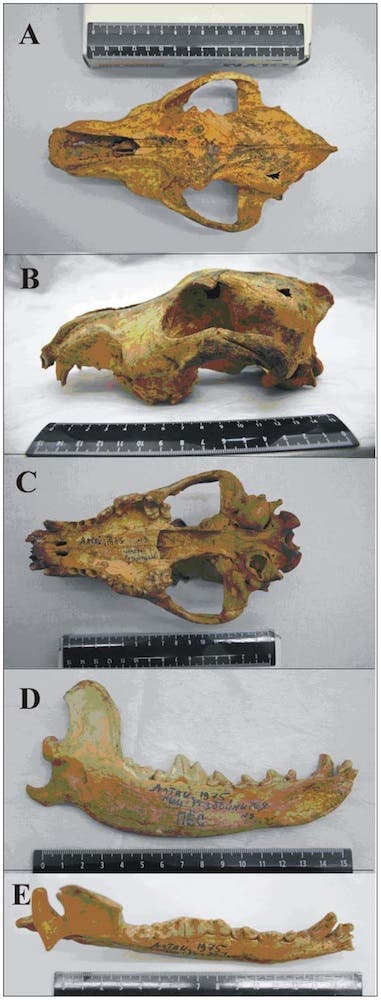
New DNA analysis of an ancient dog tooth sample found in Siberia suggests that the modern dog might be as well as 33,000 years old. If indeed the sample comes from a domesticated dog, then it would push back the origin of today’s house pets more than 18,000 years.
This significant discovery was made after researchers at the Russian Academy of Sciences tested the DNA from the fossilized teeth of an ancient dog, now known as the Altai dog, found in 1975. Though the fossil remains of the dog were discovered decades ago, only recently did it have its DNA analyzed, and what the researchers found is nothing short of a gold-mine.
“Our analyses support the hypothesis that the Altai specimen is more closely related to domestic dogs than to extant wolves,” the researchers said. “This preliminary analysis affirms the conclusion that the Altai specimen is likely an ancient dog with a shallow divergence from ancient wolves.”
The dog’s DNA was compared to that of the DNA of other prehistoric dogs, wolves, and modern dogs, and then mapped out their relatedness based on how different the DNA sequences were. Previously, it was thought modern day dogs split from wolves some 15,000 years ago in the Middle East of East Asia, as suggested by studies.
The analysis showed 99% similarity to dogs, but no exact match to existing dogs or wolves. Naturally, more work needs to be done, and other laboratories need to confirm the Russian scientists’ work before this rather important claim can be settled as true or false. Currently, there is only one dog fossil that is older than the Altai dog – the Goyet dog, dated between 32,000 and 36,000 years old and found in Belgium. DNA analysis hasn’t been possible since it’s too deteriorated for sequencing.
Findings were reported in the journal PLoS One.






